“Step into the wilds of Mauritius, where every corner holds a secret world of rare birds, mesmerizing marine life, and the graceful flight of the majestic flying foxes.”
In Mauritius, the wildlife showcases a remarkable diversity, with a distinctive mix of endemic species that make the island a biodiversity hotspot. Among the notable inhabitants are the endangered Pink Pigeon, Mauritius Kestrel, and Echo Parakeet. Surrounding the island, the ocean teems with marine life, boasting vibrant coral reefs, playful dolphins, and an array of fish species.
Preserving these treasures are land and marine reserves like Black River Gorges National Park and Blue Bay Marine Park, essential for conservation efforts. Exploring Mauritius’s diverse ecosystems reveals a rich tapestry of plants, birds, reptiles, and marine creatures, providing a haven for nature enthusiasts.
Delve deeper into this natural wonderland by booking a birdwatching hike with a biologist through Pétrin and Black River Gorges National Park, or embark on a boat trip to the northern islands for a glimpse of incredible seabirds. Discover the legacy of Gerald Durrell’s conservation work, which has helped protect rare species like the Mauritius Kestrel and Pink Pigeon, and keep a watchful eye on the ocean’s horizon for the majestic sight of dolphins and whales breaking the surface.
The Mauritian Kestrel (Falco punctatus) stands as a symbol of resilience and conservation success in Mauritius.
The Mauritius Parakeet (Psittacula eques) is a colorful and charismatic bird endemic to the island nation of Mauritius.
The Pink Pigeon (Nesoenas mayeri) is a captivating symbol of Mauritius’s biodiversity, distinguished by its delicate pink plumage and charismatic presence.
Mauritius Kestrel
Body length : 7-10 in (17.7-25.5 cm)
Wingspan : 1-1/2 ft (30.5-45.7 cm)
Weight : 6-8 oz (170-227 g)
As its name suggests, the Mauritius Kestrel is exclusive to a single location on our planet – the island nation of Mauritius in the Indian Ocean. Once thriving in the island’s primary forests at various elevations, the species faced a steep decline, dwindling to just four wild individuals by the 1970s. Thanks to collaborative efforts led by organizations like The Peregrine Fund, captive-bred kestrels were reintroduced to secondary forests and slopes, securing their future. Today, their population has rebounded to around 800 individuals, a testament to successful conservation. Unlike their Common and American counterparts, male and female Mauritius Kestrels share identical plumage. They predominantly feed on geckos and lizards but adapt to opportunistic hunting. Nesting in natural cavities or artificial nest boxes, they thrive across diverse habitats, enriching Mauritius’ biodiversity.
Echo parakeet
Population : 375 – 490 species
Body length : 13–17 in ( 34 – 42 cm)
Wingspan : 177–190 mm (49 – 54cm)
Tail : 164–200 mm (6.5–7.9 in)
Weight : 5.9 – 6.8 oz (167–193g)
The Echo Parakeet, native solely to the Mascarene Islands of Mauritius and formerly Réunion, stands as the sole surviving parrot species in this region, with all others succumbing to human-induced extinction. Now confined to the dwindling forested areas of Mauritius, which comprise less than 2% of the island’s surface as of 2017, primarily within the Black River Gorges National Park in the southwest, the Echo Parakeet epitomizes arboreal living, typically inhabiting the forest canopy for feeding and rest. Unlike its more sociable counterpart, the Rose-ringed Parakeet, it tends to move solitarily or in small clusters. Skilled at utilizing updrafts along ridges and cliffs during flight, it primarily sustains itself on indigenous Mauritian flora. By the 1980s, the Echo Parakeet faced imminent extinction, earning the title of the rarest and most endangered Mascarene bird, often referred to as “the world’s rarest parrot.”
Pink Pigeon
Body length : 30 – 38 cm
Life span : 10-18 years
Weight : 350 G
Once on the brink of extinction in the 1990s with just 10 individuals left, the Pink Pigeon of Mauritius has made a remarkable recovery thanks to the efforts of the Durrell Wildlife Conservation Trust since 1977. Sporting a distinct pale pink plumage, rosy feet, and fiery eyes, these pigeons prefer to stay in pairs or family groups, flitting between roosting and foraging spots within the island’s shrinking forests. Despite facing threats from habitat loss, invasive predators like crab-eating macaques and feral cats, and diseases, conservation efforts in areas like the Black River Gorge National Park and the predator-free Ile aux Aigrettes have provided hope for their survival.
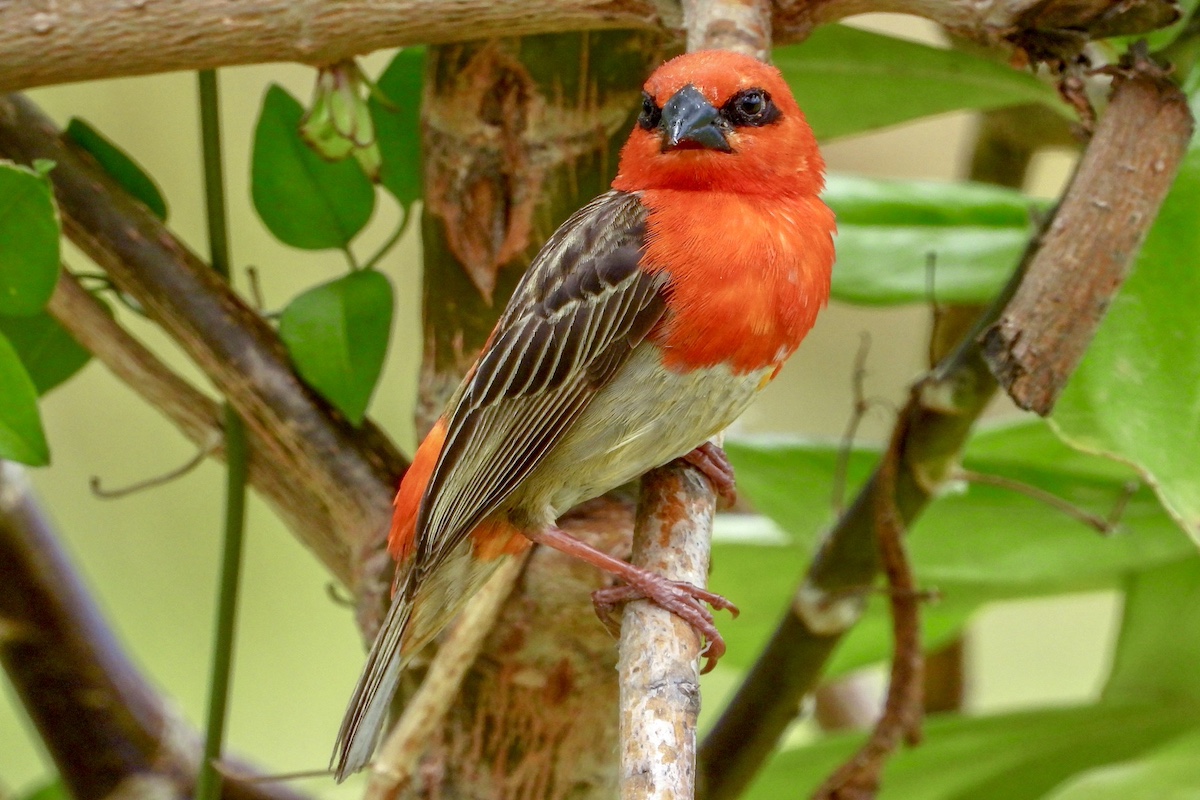
This small bird, also known as the red fody, is endemic to Mauritius. It is easily recognizable by its bright red plumage.
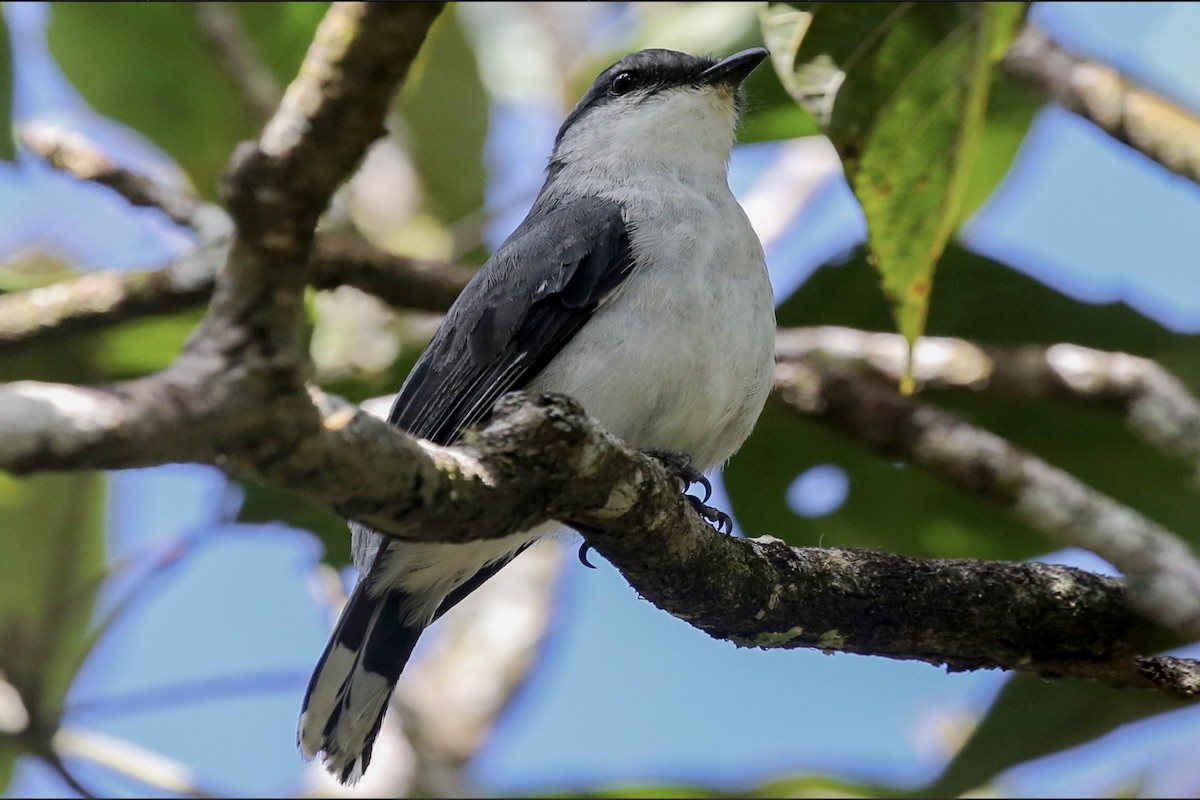
The cuckooshrike is a small bird with males having dark gray upperparts and females sporting brown upperparts.

Mauritius bulbul is known for its vibrant yellow-brown eyes, pink legs, and bill ranging from orange to yellow in color.
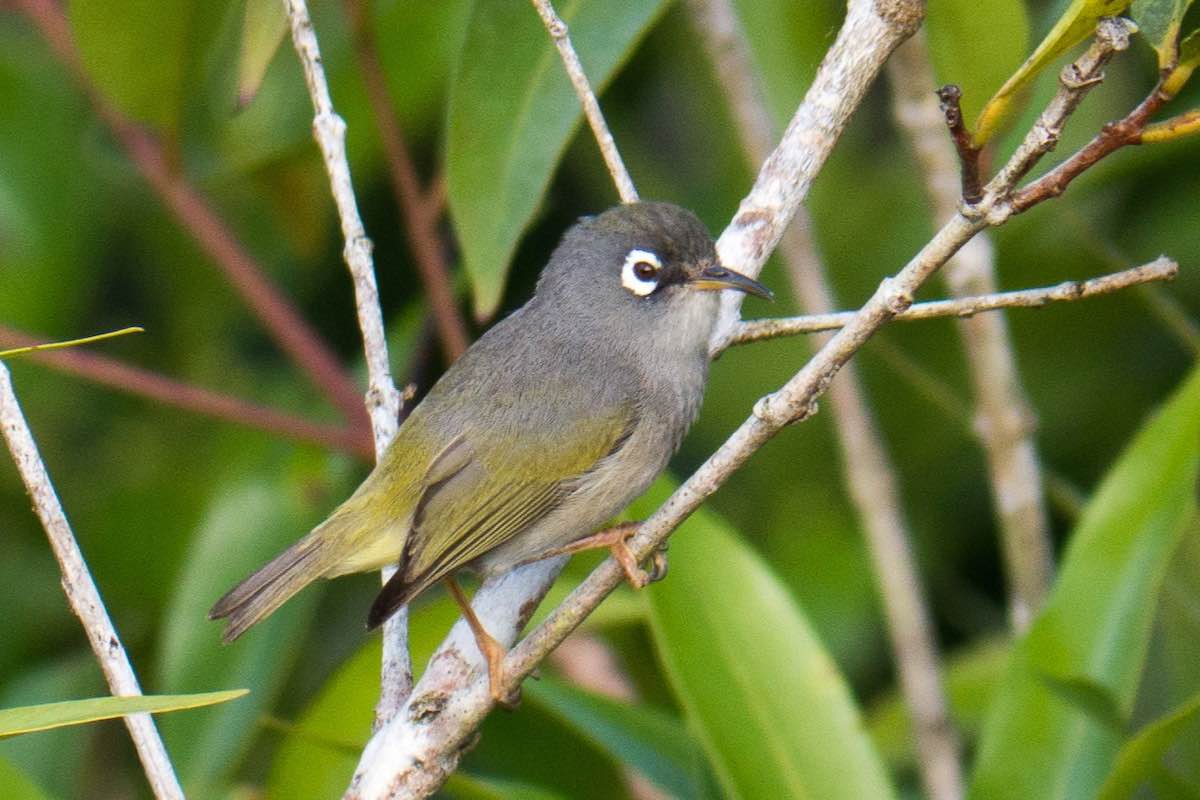
This small olive-green songbird, only 10cm long, known for its distinctive white eye-circles and curved bill ideal for nectar feeding.
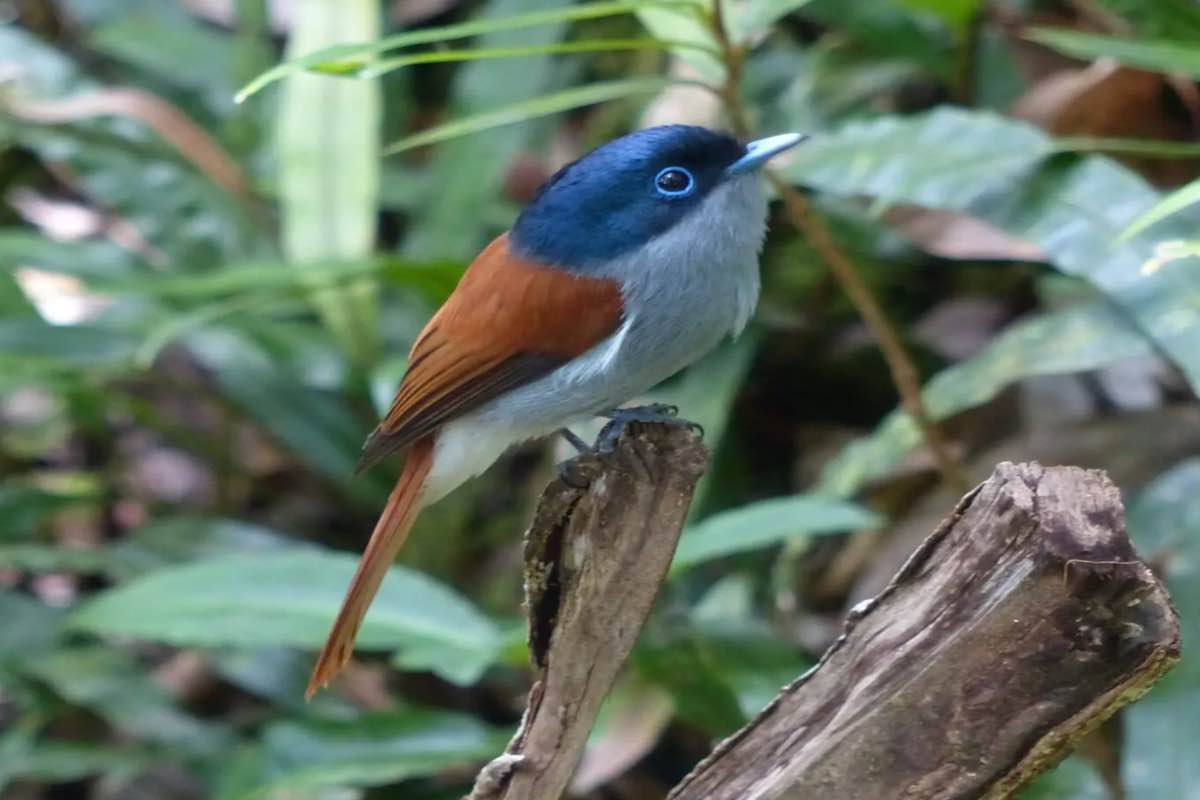
Endemic to the Mascarene islands, this species measures around 15 to 20 cm, with males sporting black heads with grey markings and females having smaller, dark-grey heads.

Also known as the sooty noddy, the lesser noddy is a seabird with brownish-black plumage and lighter forehead and crown.
La Vanille Nature Park holds a cherished colony of Aldabra giant tortoises. These majestic creatures, among the largest in the world, boast an average weight of 250 kg and some have lived over a century, embodying the park’s dedication to conservation.
Mauritius is home to a fascinating array of reptilian wildlife, showcasing unique species adapted to its tropical climate and diverse habitats. Among the notable reptiles are the Mauritius Ornate Day Gecko, with its vibrant colors and agile movements, and the Telfair’s Skink, a lizard species endemic to the island’s forests. Additionally, the Round Island Boa, a snake species found on offshore islets, and the Aldabra Giant Tortoise, introduced to conservation parks, add to the reptilian tapestry of Mauritius. These reptiles play vital roles in their ecosystems, underscoring the importance of preserving their habitats and biodiversity in Mauritius.
In the azure waters surrounding Mauritius, a captivating symphony of seabirds unfolds, painting the skies with their vibrant presence. Among them, the sooty tern, known for its raucous calls and bustling colonies on remote islets, adds an air of excitement to the coastal landscape. Glide beneath the moonlit skies and you might catch sight of the wedge-tailed shearwater, its sleek silhouette slicing through the night as it embarks on its nocturnal quest for sustenance.
And let’s not forget Audubon’s shearwater, a graceful wanderer of the seas, gracing Mauritius with its elegant flights during the breeding season. These seabirds, with their enchanting beauty and ecological significance, weave tales of adventure and resilience in Mauritius’ wild blue yonder, reminding us of the boundless wonders of the ocean realm.
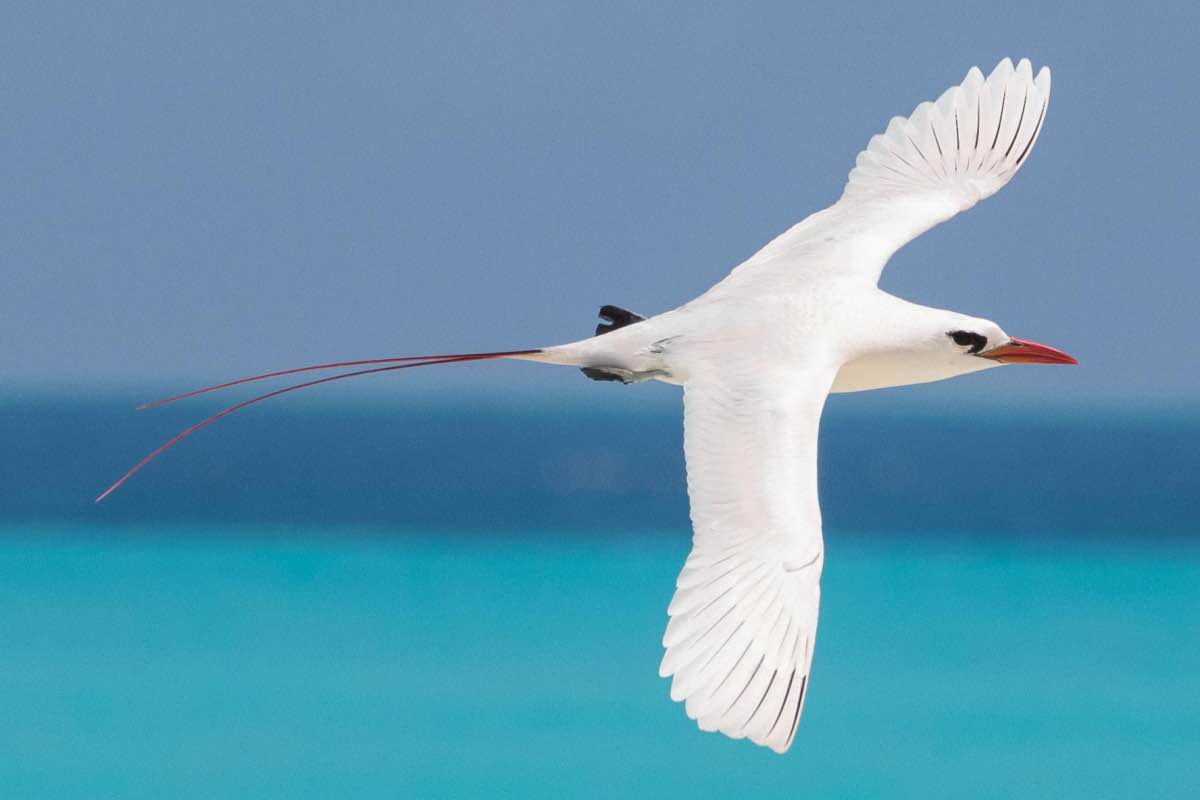
The emblematic bird of the Mascarene Islands, and also of the Air Mauritius logo: the “Paille en Queue”, a symbol of freedom.

The Mauritius Fruit Bat, with an 80 cm wingspan and golden fur, roosts in tall forest trees, avoiding direct sunlight.
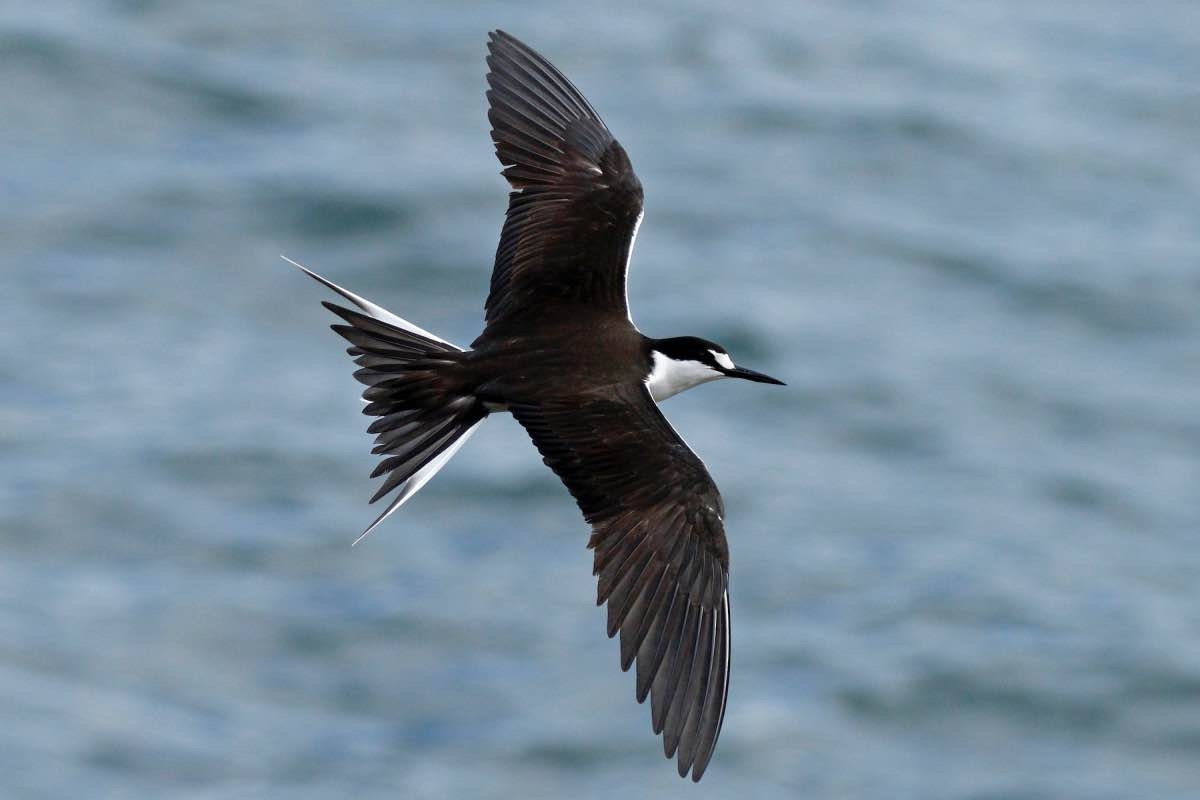
Sooty Terns, known as “wide-awakes,” are seabirds in the Laridae family, breeding exclusively on tropical islands.
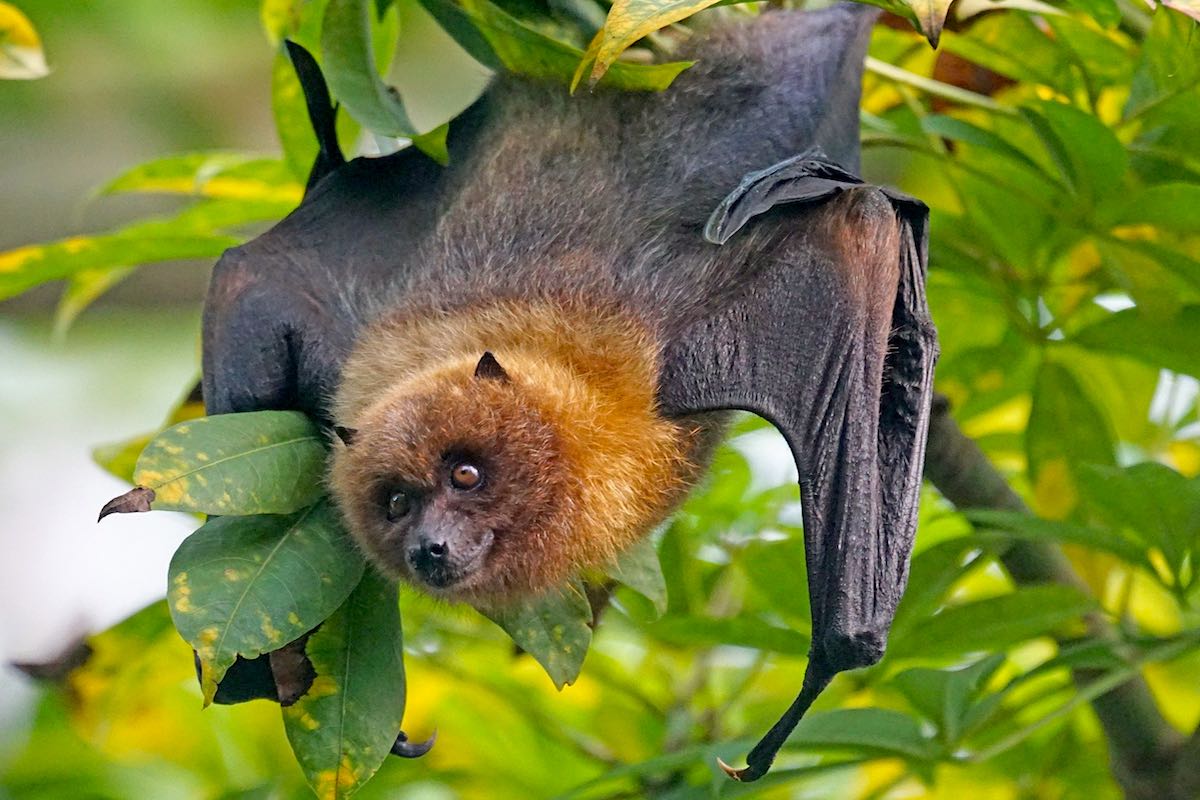
The Mauritius Fruit Bat, with an 80 cm wingspan and golden fur, roosts in tall forest trees, avoiding direct sunlight.

This small olive-green songbird, only 10cm long, known for its distinctive white eye-circles and curved bill ideal for nectar feeding.
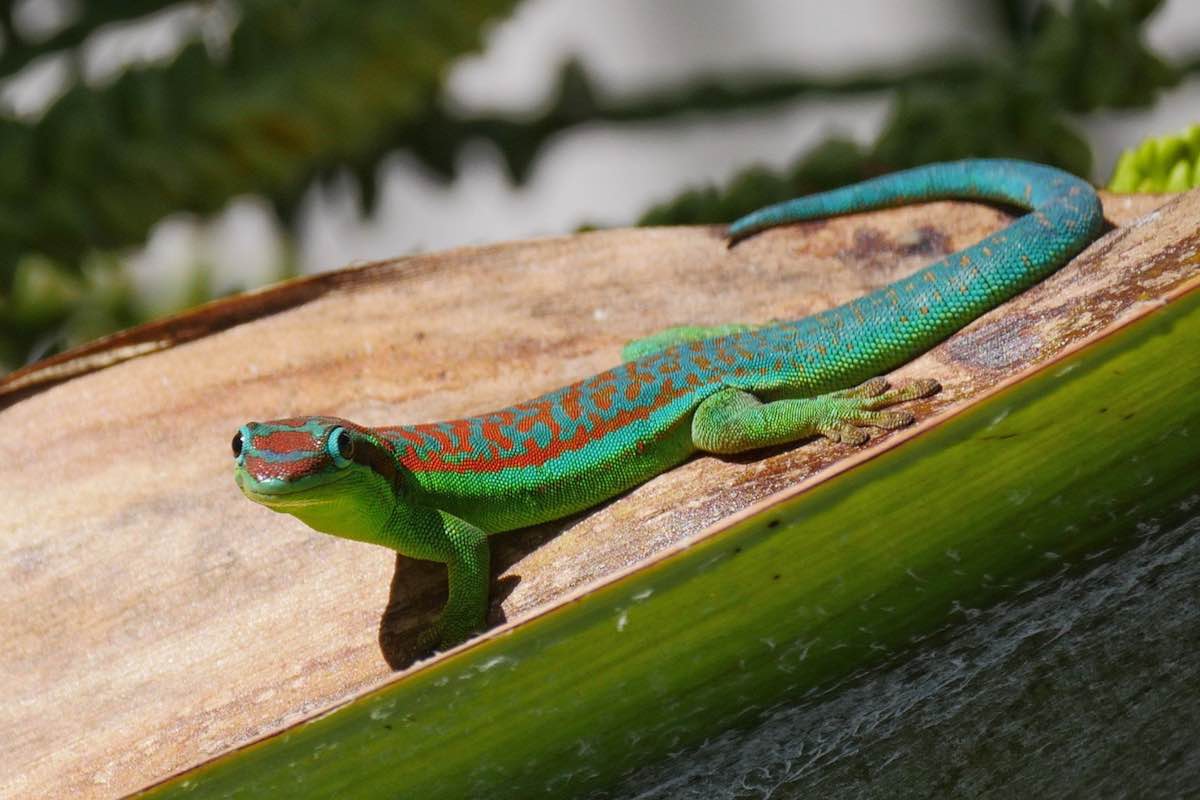
This reptile, only 1.5 to 2.5 cm long, boasts a broad head and a stumpy tail, making it one of the world’s smallest. Endemic to the Indian Ocean region, it’s a true marvel.